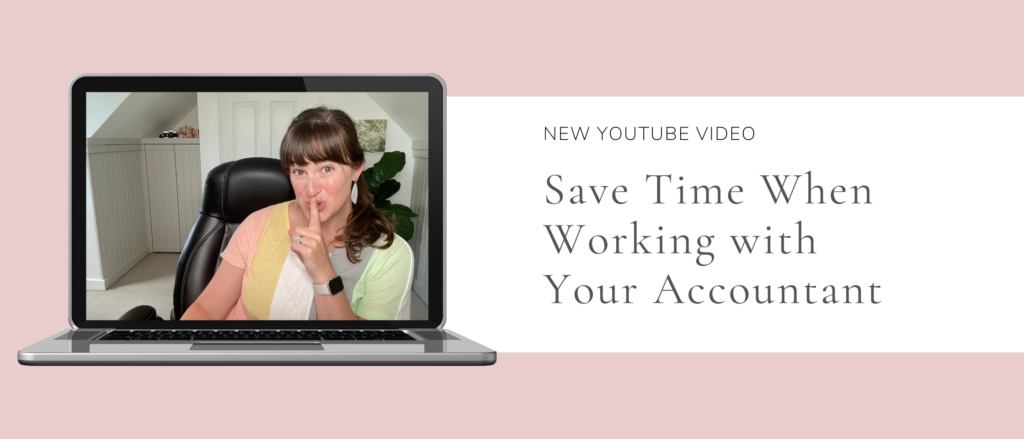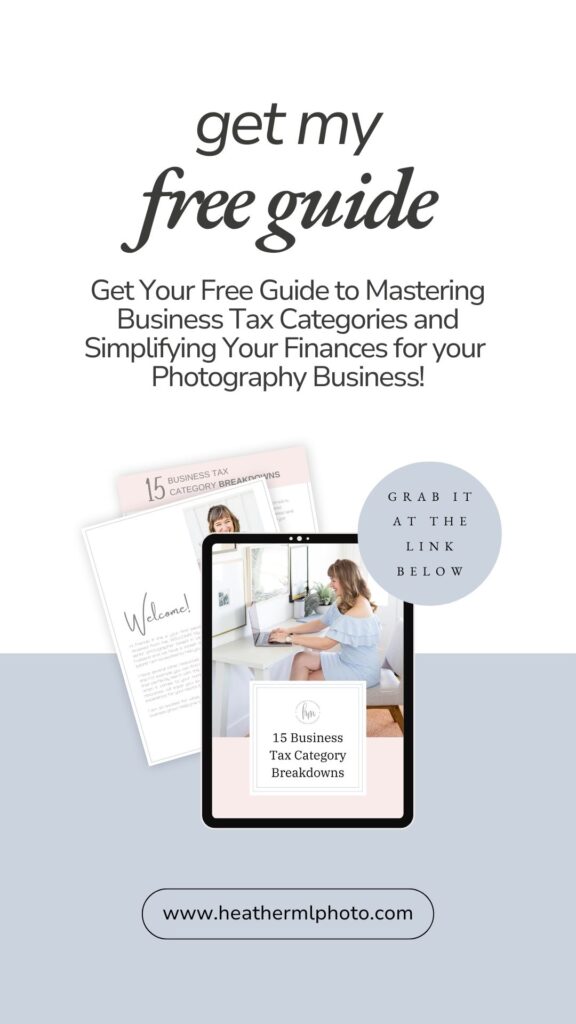When I first started my photography business, taxes used to make me cringe. I would wait until the last minute to gather my numbers, and boy, did it cause lots of late nights sifting through receipts to find everything I needed to provide to my CPA.
Every spring, our dinner table would disappear for a week or two until I could finish going through everything. And some years, we would even have to go to our CPA several times just to file our tax returns because I was still missing documents or numbers after all of those hours of work! I’d have to go home, sift through everything again, and bring it back to her.
It was exhausting and stressful every single year. And I wasted so much time. Plus, we spent more money than we needed to because our CPA would have to ask us additional questions or work more on filing our taxes because we didn’t have everything ready for her upfront.
Taxes and my CPA, sadly, used to be at the bottom of my list when it came to owning a business, and I know I’m not the only one.

In fact, 40 percent of small business owners report that understanding and navigating tax regulation is one of their top challenges in running their businesses. But we have a secret weapon in our pockets and most of us are not using it. And this may be surprising to say, but it is our CPA. They are incredible and can be so beneficial to our business. And today I’m going to share how to save time when meeting with our accountants to file our taxes, and how when we work closely with them it can help alleviate our stress around tax season.
A great starting point is understanding the different tax categories your expenses can fall into. So, I created a free guide for you. In this guide, I’ll walk you through the 15 most common tax write-off categories and what expenses fall under each of them. Plus, I’ll give you a few caveats for a few of these categories that you should know about.

H2: Organize Your Financial Documents Ahead of Time
The first thing that we can do to save time when working with our accountant during tax season is to organize our financial documents ahead of time. This can look like keeping a folder throughout the year for all of our tax-related forms to go through.
As soon as you receive something, just drop it into that folder so that you can easily grab it and have it ready for when tax season comes around, and you need to see which documents you need to send off to your accountant or CPA. Things like W2s or other income statements, expense receipts that you receive, mortgage payments and contributions that you’ve made throughout the year. Make sure when you receive them, you drop them into that folder so everything is in one place and easy to grab when it’s time to work with your accountant.
In addition, ask your accountant if there’s a specific way they would prefer you organize all of those different documents, whether it’s labeling them electronically in a certain way or organizing them from front to back in a specific way that works best for them.
Doing that makes it really easy for them to sift through the documents and find the information they need to input for your tax return. So working with them closely can save time for you and also for them at the end of the year.
In addition to that, there are also tools out there such as QuickBooks, where you can take pictures of your receipts for your different expenses and quickly upload them so that they’re connected with the expense that it goes with. This makes it easy for your accountant or your bookkeeper to easily see what expenses you made for your business and what categories they fall under for tax deductions.
Making everything streamlined and easy to find is one way that you can save time when working with your accountant.
H2: Maintaining a Consistent Record-Keeping System
The next thing is maintaining a consistent record-keeping system. Maintaining a consistent record-keeping system is so important in so many different ways, but especially when you’re working with your accountant and CPA and trying to save time. Gathering everything for them, doing this throughout the year, and organizing your numbers as they come in allows you to categorize things while they’re top of mind. It helps you stay on top of your tax prep. So you’re not rushing to do it at the end of the year, where you may make more mistakes or miss things because it’s not fresh in your mind and you don’t know exactly what things were for, or it may take you longer to remember what they were used for.
Doing it once a week will only take you 5 to 10 minutes, and you’ll be able to easily grab the numbers for your CPA for what they need to file your tax return instead of shuffling through and adding up your expenses at the end of the year, trying to remember exactly what expense it was for, and you may even miss some of the tax deductions that you could receive.
Doing it all while it’s happening week by week will allow you to already have things categorized and calculated and your income totaled. It’ll allow you to just pass it off to your accountant or CPA and save you time and hassle trying to do it all at once. You can use things like a spreadsheet that you create to track your numbers or you can get an accounting software like QuickBooks that will do it behind the scenes .I have a spreadsheet in my shop if you’d like to snag that so that all you have to do is start implementing things week by week.
At the end of the year, when you’re getting ready to meet with your accountant or CPA, all you’ll need to do is just create, or download from your accounting software, a year-end financial summary.
This highlights things like your business numbers that you’ve had throughout the year and totaled, such as your income, your expenses broken down into your different deduction categories, cogs that you’ve had, and ultimately what your net profit is for your business for the year. This will bring all your numbers together in one document for your accountant or CPA to easily reference as they file your tax return.
Maintaining a consistent record-keeping system, not only saves you time at the end of the year but also saves your accountant and CPA time because they’re not going to be constantly asking you questions on things that they need that you didn’t provide to them initially. So go ahead and get that implemented into your weekly routines.
H2: Communicate Effectively
Communicating effectively with your accountant or CPA can make sure you are all on the same page. Ask them how they would prefer to receive your numbers, whether it’s a PDF or a spreadsheet, or potentially even through an organizer that they provide to you.
Giving them what they need in the way that works most efficiently for them cuts down on the amount of time that they have to spend filing your taxes because they’ll easily be able to find the numbers that they need to file them. Also, it allows them to easily see anything that was missed. They can ask you questions to help you save more money and just to make sure that everything is correctly submitted.
Communicating with them doesn’t only need to happen during tax season though. Make sure to check in with them throughout the year to make sure no tax laws have changed that may affect your business or update them if something has changed in your business personally.
Communicating with them throughout the year allows them to be prepared and up to date on what to expect when you send over your documents and numbers for that year. It eliminates the questions and makes sure you are paying the correct amount of money. So instead of fearing your CPA, work with them. They are the ones that can help you find ways to cut down on your taxes that you owe and save your business money overall. Ask them questions, give them updates, and be prepared before they even reach out.
Doing this will help alleviate the stress of tax season knowing nothing is missed. And grabbing that freebie that I created for you that outlines 15 tax category breakdowns for the different tax deductions will also help you streamline those weekly tasks in organizing your expenses for your business.
Have questions about the questions you should ask your accountant? Ask away in the comments below!
Few things make me more excited than getting the chance to help another photographer prepare for an easier tax season. So, don’t forget to snag the 15 Business Tax Category Breakdowns.

Let’s Prep for Tax Season – Together
Make tracking your numbers easy with my Tax Prep Spreadsheet and ensure that tax season is a breeze.
Transform your passion into a thriving business and unlock success for your photography business with my free guide to setting goals for the first year of your photography business.
Want taxes to suck less? Learn how to correctly prepare your taxes for your accountant with the Photographer Tax Course – and say hello to a confident and calm tax season!
Don’t know what you don’t know? You’re just 90 minutes from a custom tax prep system with my 1:1 Tax Prep Mentoring sessions!
XOXO ~ Heather Marie
Other HMP Blogs for Photographers:
+ COMMENTS
add a comment